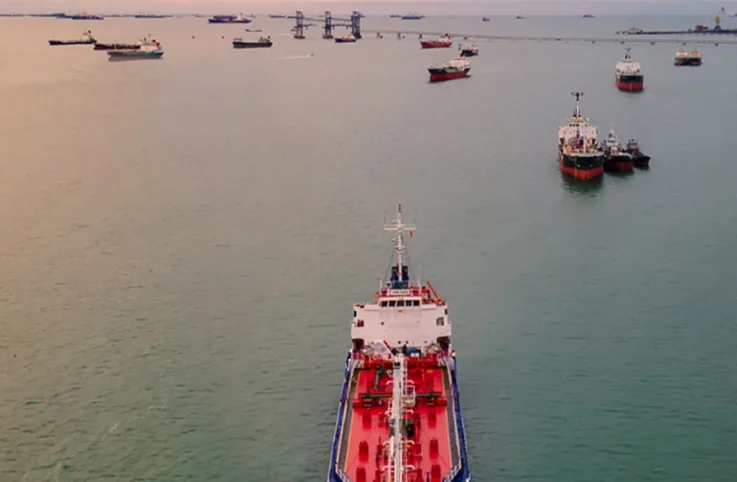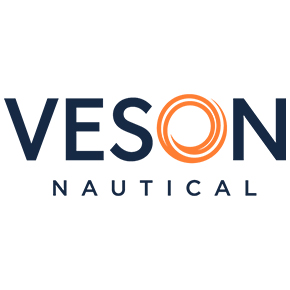Given the current political climate that the industry has entered in early 2022, it’s speculated that the shipping industry’s shift towards digitization will become increasingly necessary – especially when it comes to voyage management. With the supply chain disrupted initially by the pandemic and now broken entirely in some cases due to political tensions, the need to have a complete overview of vessels and routes has never been more critical.
As pioneers within the shipping solutions space, we have been offering a plethora of products for the industry for years now, including Q88VMS. Complementing the data-driven and tailored solutions is SEDNA, a smart email platform that uses meta-data to automatically populate emails, reduces email volume by up to 95%, supports collaboration, and ensures that important messages are never missed.
Apart, they solve key challenges within the shipping industry – together they provide a unique competitive advantage to maritime professionals looking for a way to gain more speed, simplicity, and ROI while reducing risk.
Digital Transformation and Optimized Vessel Management
“Data is at the heart of our global economy. In some senses, it practically is our economy. It has the power to create enormous value, increase productivity, accelerate innovation, and help find solutions to the big challenges of our times. Our emails carry a huge amount of untapped value for businesses. But this is only one source of data—businesses rely on many more.”
Leigh Steed-Middleton, VP of Product SEDNA
The complexity of vessel management has long been an area of shipping that professionals have sought to simplify. Of course—as with much of the shipping industry—one of the biggest bottlenecks to optimizing workflows has been a reluctance to move towards software solutions.
Most notably, the role of data within the shipping industry has created this lasting impact on the overall digital landscape of maritime solutions. The sheer volume, complexity, and sensitivity of maritime data can be overwhelming to manage or put to use, even for those with years of experience behind them.
“There are many reasons why organizations struggle to generate actionable information. One of them being the missing link to the commercial decision-makers. The need to share information across an organization successfully is paramount, and silos within companies must be broken.”
Fritz Heidenreich, CEO, Q88
Now that more and more industry leaders are opting for intelligent software solutions over labor-intensive options to help them grow and optimize, it seems that the scales are finally tipping in software’s favor, and perhaps not a minute too soon.
With a supply chain that’s been in a state of flux since 2020, the ability to manage vessels efficiently and accurately has never been more critical or challenging, and it’s an area of the maritime industry that SEDNA and Q88 have sought to streamline.
With Q88VMS, users gain access to voyage management that turns data into actionable insights from a secure, cloud-based standpoint. Whether it’s tracking tonnage supply trends, voyage tracking, or cargo evaluations, Q88VMS is designed with modern shipping in mind. By creating a single space where all voyage communications, data, and finances can be managed, the ability to pivot quickly should problems arise is simplified.
Complementing this is SEDNA’s smart email platform. With the maritime sector battling gargantuan volumes of email, the ability to prioritize or identify key information quickly often falls by the wayside, resulting in missed opportunities and costly mistakes. Not with SEDNA. Instead, SEDNA turns email into smart action points, removing the need for duplications and endless threads, and instead offering fast and accurate features to make email an essential aspect of voyage management.
Together, both products approach vessel management from two key vantage points: efficient data management and actionable email management. This combined solution isn’t only streamlining an already complex facet of shipping; it’s also future-proofing the maritime industry by helping to bolster it from further global disruptions.
How Integrations Are The New Competitive Advantage
While the individual strengths of voyage management solutions are integral to shipping’s success, it seems that the knife-edge of a true competitive advantage for professionals will be in integrating their systems. With cost-cutting and time-saving being among the top priorities for maritime professionals—especially those in the voyage management space—the ability to reduce mistakes and swiftly adapt to sudden logistical changes is paramount.
“Our partnership with Q88 allows our users to enrich the data in their emails, allowing SEDNA to transform it into actionable insights that help our customers be more efficient and effective in their work.”
Leigh Steed-Middleton, VP of Product SEDNA
“Our companies align in vision and technology. This integration was a natural step for Q88 and Sedna as we are equally committed to simplifying the activities of commercial operators. “
Gabriel Reiter, Chief Product Officer Q88
Of course, the need for integrated solutions goes far beyond individual company needs for greater ROI. Currently, many maritime professionals are looking to their existing software solutions providers to help them weather this turbulent time within the industry. With this very much in mind, Q88 and SEDNA are committed to partnering and creating more integrated solutions. The aim is to move with the needs of the industry and provide a critical one-stop-shop for vessel management professionals and beyond. Not only will this save time and money, but it will also give individuals the agility they need to respond to changes quickly.
Shared space between Q88VMS and SEDNA will ensure that users can make the most of their data, that they never miss a critical message, and that voyages can be handled with confidence, care, and speed.
“Connecting Q88VMS and SEDNA was incredibly easy, and the way these systems talk to one another is essential to our operator workflows. The voyage number generated in VMS is required to connect to SEDNA, and once connected, information flows seamlessly between the systems; data in VMS only takes about 10-15 seconds to reflect and update in SEDNA.”
Alex Schulten, Senior Operator Sokana




